When and how to introduce solid foods into your baby's diet

As you take a bite of your dinner, you can feel the eyes on the back of your head. It’s the family’s newest member. And it’s clear: Baby wants a bite.
Advertisement
Cleveland Clinic is a non-profit academic medical center. Advertising on our site helps support our mission. We do not endorse non-Cleveland Clinic products or services. Policy
But when can babies start eating baby and solid food? Babies born full-term with no other health problems can start anytime between 4 and 6 months of age, says pediatrician Radhai Prabhakaran, MD. For children who were born early or with disabilities, speak with your child’s healthcare provider or therapists before you start the transition.
Dr. Prabhakaran lists the signs that a baby is ready to start eating baby food.
The CDC recommends starting with single-ingredient foods, though it’s OK to use a little bit of spice or seasoning. “Seasoning is fine as well, as long as it’s not overloaded with salt or sugar. Too much isn’t good for baby’s kidneys.”
Foods such as rice cereal or oat cereal are a great place to start.
“Mix it with breast milk or formula. It should have a pureed, smooth consistency,” Dr. Prabhakaran says. “And then you can thicken or thin it, depending on how your baby accepts it.”
You could also start with other single-ingredient foods, such as mashed fruit or vegetables.
“If it’s already soft, like a banana, for example, just mash it up. If it’s not naturally soft, cook and then puree it. And if you’re buying from the store, start with stage-one baby foods,” Dr. Prabhakaran adds.
Advertisement
Try the following foods, too, ensuring that they’re pureed to a super-smooth consistency — no chunks! — so your baby can handle them.
Avoid small, solid foods that may cause choking, such as:
Dr. Prabhakaran doesn’t recommend introducing more than one new food at a time. It’s important to start with a single-ingredient food to safely suss out if your child has any food allergies. Add a new one every three to five days.
“That way, you know exactly which foods are safe for your child,” Dr. Prabhakaran explains.
The most common food allergy symptoms include:
Foods that may cause allergies in babies include:
The CDC says that children under 12 months old shouldn’t drink cow’s milk, but it’s OK to introduce them to other dairy products, including yogurt made from cow’s milk, earlier than that.
Dr. Prabhakaran says start by introducing your baby to the idea of eating — at this stage, it’s not about getting nourishment. How much should your baby eat? “Start with 1 to 2 tablespoons once a day, and make it fun,” she says.
“Follow the mini-meal up with breast milk or formula. Once eating becomes more enjoyable, and everything is going well, increase the practice to two then three times a day.”
The goal for feeding is one small jar (4 ounces or a cup) of strained baby food per meal. If your child starts drinking less, it’s par for the course. As babies eat more solid food, they naturally decrease the amount of breast milk or formula they consume. “But continue to offer it.”
It’s time to move on to the next stage — foods with more texture (exciting!) — when babies are happily and successfully eating completely pureed food. Dr. Prabhakaran recommends baby-led weaning, which is when you let your child show you when they’re ready for that next stage.
“Progress to easy-to-swallow, soft foods that babies can pick up with their fingers and put in their mouths, such as small pieces of bananas, pasta, or finely chopped eggs or chicken,” she advises.
Once your baby masters softer, textured food, you can progress to:
Advertisement
Advance to small amounts of table food when they get more teeth around 9 to 10 months.
“Avoid chunky meat, such as hot dogs and steak, and whole nuts or whole grapes,” she says. “But anything softer with small bite-sized pieces should be fine. Just use a fork to mash it up a little bit.”
Dr. Prabhakaran weighs in on other baby food-related questions that don’t fit concretely into the buckets above.
A. Babies are not ready for solid foods if they’re:
A. It’s OK to give baby a little water with food, but not more than 4 to 8 ounces in a day, Dr. Prabhakaran notes. “Babies still need formula and breast milk at this point.”
But avoid juices. “They can eat the fruit itself, but juices are not good, especially if they have some teeth,” she says. “The sugar in the juice may cause decay.”
A. “If your baby rejects a food, don’t think they don’t like it. It takes a while for their taste buds to accept new flavors and tastes, so try a few more times,” Dr. Prabhakaran says. “And feel free to feed the baby what your family eats — just go slow with foods with intense flavors and seasonings.”
Advertisement
A. The best way to deal with common food allergens, such as peanut products, eggs, soy and fish, is to introduce them to your child early: around 4 to 6 months. Feel free to offer these foods to your child if:
The only foods on the no-fly list? Honey and cow’s milk until age 1 (small amounts of cheese and yogurt are OK).
“We don’t recommend honey, especially unpasteurized, because of the risk of botulism,” explains Dr. Prabhakaran. “Breast milk is the best choice for your baby until they are one year old. And even though formula is made with cow’s milk protein, it is fortified with more vitamins and iron than cow’s milk.”
If you have any concerns, check with your child’s pediatrician before introducing potential allergens. They can help assess your child’s risk and come up with a plan to see if your baby can safely enjoy these foods.
Advertisement
Learn more about our editorial process.
Advertisement
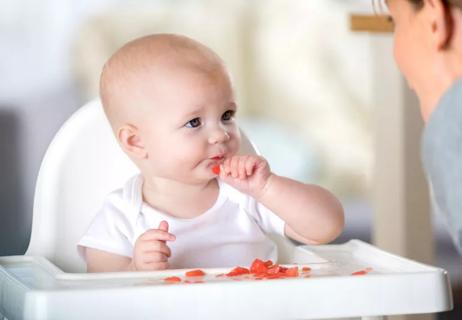
Here's the scoop on one healthy way to feed your baby
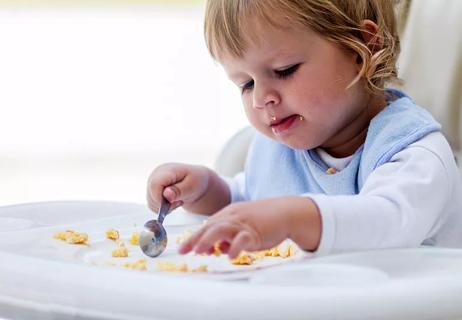
The short answer from a pediatrician
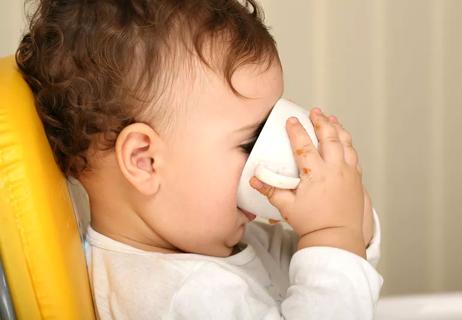
Babies should wean off the bottle at 18 months
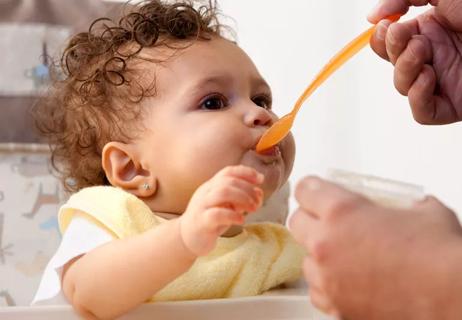
How to make baby food at home

The short answer from a pediatrician
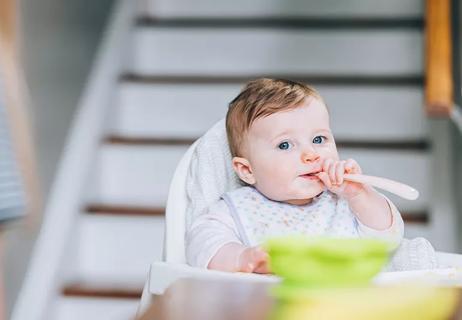
Variety has long been the spice of life. Now, it can also help keep your child safe.

A pediatrician weighs in on this whole foods approach to weaning
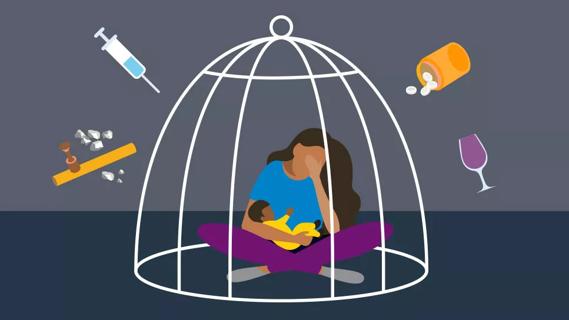
Neonatal opioid withdrawal syndrome, or NOWS, can develop when a birthing parent uses opioids, nonmedical drugs or even some prescription drugs during pregnancy

Type 2 diabetes isn’t inevitable with these dietary changes

Applying a hot or cold compress can help with pain